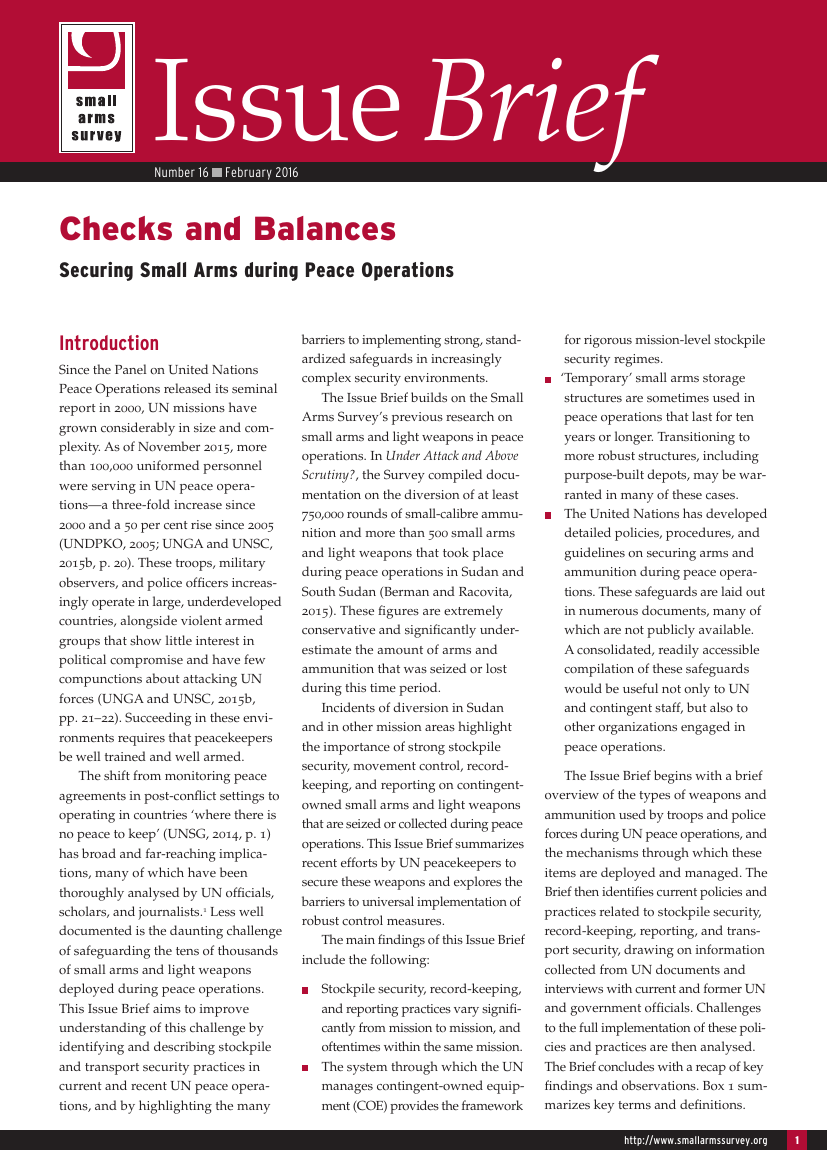
Checks and Balances: Securing Small Arms during Peace Operations (Issue Brief 16)
Since the Panel on United Nations Peace Operations released its seminal report in 2000, UN peacekeeping missions have grown considerably in size and complexity. More than 100,000 uniformed personnel were serving in these missions as of November 2015, an increase of 300 per cent since 2000. These soldiers and police officers are operating in challenging environments, often in underdeveloped countries amidst violent armed groups with little interest for political compromise and no compunctions about attacking their perceived enemies, including UN forces. Any hope of success for these missions requires that peacekeepers be well trained and well armed.
The implications of the UN’s shift from monitoring peace agreements in post-conflict settings to operating in countries ‘where there is no peace to keep’ are many and varied. While researchers and policymakers have thoroughly studied many of these implications, the daunting challenge of safeguarding the small arms and light weapons deployed as part of these operations are less well-documented.
Checks and Balances: Securing Small Arms during Peace Operations, the latest Issue Brief from the Small Arms Survey, attempts to improve understanding of this issue by identifying and describing practices in current and recent UN peace operations, highlighting the challenges to implementing these practices, and the describing the UN’s attempts to overcome them. Building on the Small Arms Survey’s previous research on small arms and light weapons in peace operations (see Under Attack and Above Scrutiny?), this Issue Brief explores the barriers to universal implementation of robust control measures.
Have your say about Small Arms Survey publications and products: take 5 minutes to fill out our questionnaire.